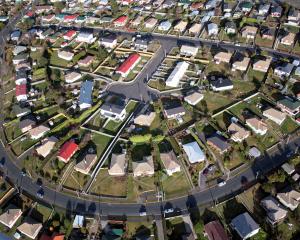
Most of the barbecue conversations have been quite generic, for example focusing on what the true impact of the planting of a billion new trees will have on our ecosystem as we strive towards addressing our carbon neutrality goals via a massive carbon sink consuming hundreds of thousands of acres, whether intense forestation of otherwise productive land will have a material negative cash-flow consequence for NZ in the short term (e.g. milk sells annually, trees are harvested every 25 years or so), and whether the regularity of forest fires in NZ will also increase as we experience forestation and climate change.
We even debated the concept of farming carbon credits, versus (or to exclusion of caring about) wood, and the long-term impacts that could have on good forestry management.
I also listened to an interesting podcast about the collapse of Myan civilisation being partly attributed to regionalised climate change arising from significant local deforestation, leading to droughts and the breakdown of social structures, and pondered what impact intensive re-forestation could have on some regions in NZ, if any. But I am getting off topic.
Forestry has been a popular form of investment over the years, including through fractionalised ventures like Limited Partnerships, with investors ranging from large corporates, investment funds, managed syndicates/partnerships, through to small personal holdings or a utilisation of sub-par land within existing farms.
Against the backdrop of climate change and expectations around the potential changes to rules pertaining to trading carbon credits, plus the Government’s Billion Tree Programme and associated incentives, based on the discussions I have had, there is an increased interest in forestry as an investment, notwithstanding short-term price fluctuations for wood.
Of course people were interested in how the tax of forestry works ...
Taxable income is derived from almost any disposal of timber, which includes disposal of sawn or standing timber, or the grant of a right to cut and remove timber. This also includes insurance proceeds when a forest is destroyed.
When land is sold which contains a stand of trees which is a forest block (not merely a shelter belt or ornamental), a market valuation should be obtained to determine whether any gain in the value of the trees should be returned as income.
It also follows that the purchaser of the land with the stand of trees will then use this value as their cost base.
This is often forgotten about when farms are sold. Transfer upon death may also trigger tax consequences.
Where income has been derived from the disposal of timber, there could be significant income (and therefore tax), depending on the size of the block in question.
While the general rule is that income is taxable in the year in which it is derived, there are provisions within the Income Tax Act 2007 relating specifically to timber.
The nature of these provisions is to provide a concession with respect to the timing of income derived.
What this concession provides is that income derived from the disposal of timber, the right to take timber, or land with standing timber on it may be spread over the year of disposal and any one or more of the previous three income years.
This is generally appealing to direct personal holdings whereby lower marginal tax rates of previous years can be accessed.
To take advantage of this concession, the person who has disposed of the timber must make application to the Commissioner within 12 months of the end of the income year in which the disposal takes place.
If the Commissioner agrees, the same proportionate amount of any deduction allowed for the cost of timber must be spread back as well.
The flip side is that apart from an acquisition of existing forest, many of the expenses around planting and maintaining a forest block are immediately deductible in the year incurred (or assets used being depreciated) for those in the business of forestry, meaning that investors in forests can generally generate significant tax deductions during the early phases of the forestry venture (assisting with cash flows), but only suffer tax leakage at the harvest/vesting stage.
This is also concessionary, as in a manufacturing business, for example, the tax deduction these type of "creation" costs would be essentially deferred as work in progress. However, there are some complexities in these rules.
The impact of carbon credits is in itself worthy of an article, suffice to say that the complexity and fishhooks of the current regime need to be carefully considered when investing in forestry.
For example, sale of credits generally creates taxable income but surrender shouldn’t or that some of the obligations for "repaying" credits attach to the land, not the previous owners, which has caught land purchasers out at times.
Like any business, forestry has some wonderful opportunities when done well, and is a true inter-generational asset, but it is capital intensive and does need to be actively managed to ensure the desired outcomes are achieved, especially with some peculiarities like tax rules and carbon credits.
- Scott Mason is a tax specialist and managing partner at Findex in Dunedin.







